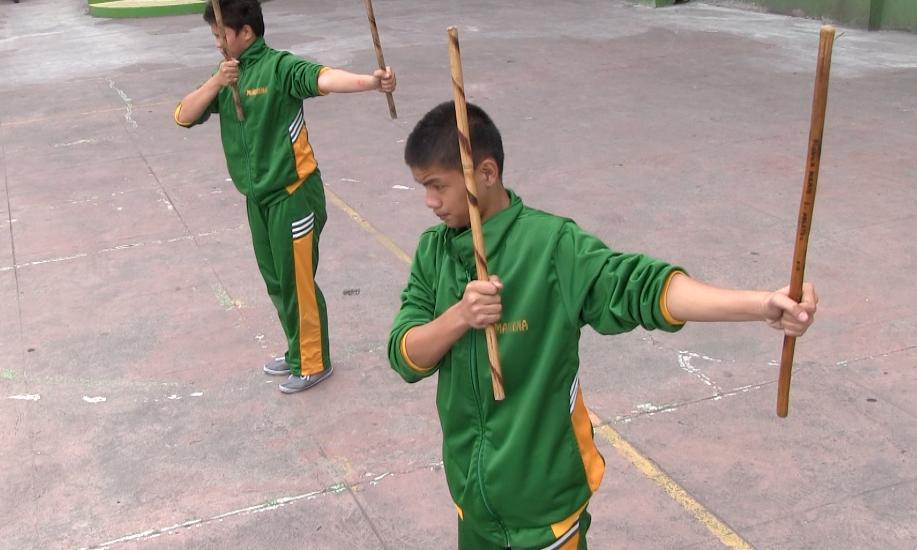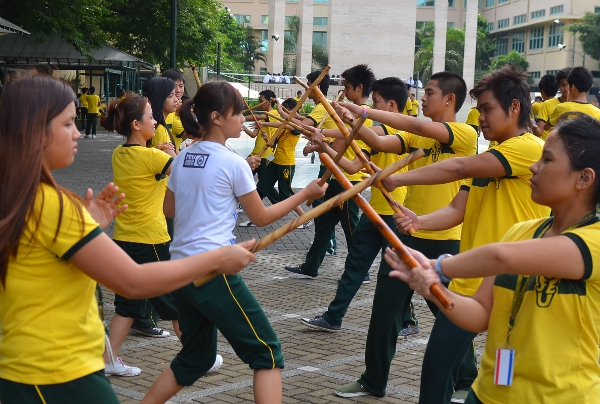Arnis captures the spirit of the Filipino way of life, whether through the wicked-fast techniques displayed in competitions or the rhythmic motions of the sticks. Its cultural importance extends beyond the confines of fighting; it symbolizes the Filipino people’s innermost being, their tenacity, fortitude, and steadfast commitment to defending their customs and culture. A living heritage that serves as a reminder of the resilience and fighting ability of the Filipino people is arnis.
The collection of styles called Arnis is a comprehensive system encompassing striking, grappling, and disarming techniques using sticks, knives, and empty hands. Arnis’s history is deeply intertwined with the cultural and historical fabric of the Philippines, reflecting a blend of indigenous practices and foreign influences.
Since 2009, Arnis has been recognized as the national sport of the Philippines. “Swinging and twirling movements, accompanied by striking, thrusting, and parrying techniques for defense and offense” are the defining characteristics of this martial art. The practice passed down for ages, help practitioners become more skilled, fast, accurate, and agile.
Arnis is also known as eskrima, kali, and garrote, and by even more names in different Filipino regional languages. There are many languages in the Philippines, and they all have their name for swordsmanship and stick fighting.
Origins and Early History
The roots of Arnis can be traced back to the pre-colonial period of the Philippines. The archipelago comprised various ethnic groups, each with its martial traditions. Indigenous fighting techniques were developed primarily for warfare, hunting, and tribal conflicts. These early forms of combat included using sticks, bladed weapons, and improvised tools.
The arrival of the Malays and Indonesians brought additional martial influences to the islands. These groups introduced their weapon-based martial arts, integrated with indigenous practices. This fusion of techniques laid the foundation for what would later become Arnis.
Arab traders arrived in the Philippine Islands in 200 A.D. with razor-sharp-bladed weapons and a fluid combat technique. These Muslim inhabitants in Mindanao’s southern region were renowned for their ability and tenacity in forcing off intruders.
The Chinese began dealing with the Filipinos in the ninth century, ultimately contributing to Eskrima’s continued refinement.
Before the arrival of the Spanish, there was a lot of trade with Japan (about the 15th century.) As a result, the Japanese locking martial arts skills were blended with Filipino sword techniques to enhance Filipino martial arts further.
Ferdinand Magellan’s armored, musket-wielding Spanish conquistador armies were routed in 1521 by the Filipino islanders, who had little more than bladed weapons, poison-tipped blowguns, and their formidable arnis talents.
Spanish Colonial Period
The Spanish colonization of the Philippines in the 16th century profoundly impacted the development of Arnis. The Spanish conquistadors encountered fierce resistance from the native warriors, who wielded their weapons with great skill. Recognizing the effectiveness of these techniques, the Spanish began to suppress the practice of native martial arts to prevent uprisings.
The Spanish businesspeople who followed Ferdinand Magellan during the mid-1500s introduced their “Espada y daga” styles, and the natives adapted quickly to this new martial arts system. Each of these outsiders had impacted the Filipino stick and bladed-based martial arts.
Despite this suppression, Filipino martial arts persisted in secret. Practitioners disguised their training as folk dances or rituals to avoid detection. Dances such as Sakuting. This period of clandestine practice led to the evolution and refinement of techniques, as practitioners adapted their methods to include countering the tactics of Spanish soldiers.
American and Japanese Influence
The American occupation of the Philippines in the early 20th century brought new influences to the development of Arnis. Filipino fighters were exposed to Western boxing and wrestling, incorporated into their traditional martial arts. This period also saw the formalization and organization of various Arnis styles.
During World War II, Filipino guerrilla fighters utilized their Arnis skills in combat against Japanese forces. The effectiveness of these techniques in real combat situations reinforced the value of Arnis as a practical and versatile martial art.
Modern Development and Global Spread
The post-war period saw a resurgence of interest in Filipino martial arts. Grandmasters such as Ernesto Presas, Remy Presas, Cacoy Cañete, and Antonio Ilustrisimo began to systematize and promote their respective styles of Arnis. Ernesto Presas, in particular, played a pivotal role in popularizing Arnis through his Kombatan system, which emphasized practicality and adaptability. His brother, Remy Presas, popularized Arnis through his Modern Arnis art.
In 1972, President Ferdinand Marcos declared Arnis as the Philippines’ national martial art and sport. This recognition helped preserve and promote Arnis’s practice both within the country and internationally. Today, Arnis is practiced worldwide, with numerous schools and organizations dedicated to teaching its principles.
In 1980, “The Filipino Martial Arts as taught by Dan Inosanto” was published. With this seminal work, Dan Inosanto coined the term FMA for Filipino Martial Arts and introduced the world to this exciting collection of styles and systems.

Cultural Significance and Legacy
Arnis is more than just a martial art; it reflects the Filipino spirit and cultural heritage. Arnis’s practice embodies the values of resilience, adaptability, and ingenuity. It is a living tradition that continues to evolve, incorporating modern techniques while preserving its historical roots.
The legacy of Arnis is celebrated annually on December 5th, which is recognized as National Arnis Day in the Philippines. This day honors the contributions of Arnis practitioners and promotes the country’s rich martial heritage.
The history of Arnis is a testament to the resilience and adaptability of the Filipino people. From its ancient roots to its modern global presence, Arnis has developed into a comprehensive martial art that thrives and inspires practitioners worldwide. The legacy of Filipino martial prowess and cultural heritage is preserved and celebrated through its practice.
Arnis in popular culture: Hollywood
Close-quartered, fast-paced fights look great on screen, and no martial style involves quite the combative speed of arnis. It’s no wonder it’s so popular with Hollywood directors.
- The Bourne Identity (2002) features a Kali and Jeet Kune do hybrid fight style when Jason Bourne encounters Jarda, the only other living agent of the terminated ‘Treadstone’ program.
- Vin Diesel and Jason Statham fought with eskrima-inspired combat, using metal pipes and wrenches instead of sticks, in the final fight scene of Furious 7 (2015).
- In Kick-Ass (2010), the eponymous character fights crime with arnis clubs, while his vigilante partner, Hit-Girl, uses Filipino balisong knives.
- Liam Neeson uses a combination of arnis, wing chun, and silat to rescue his daughter from her French captors in Taken (2008).
- In Quantum of Solace, the 2008 installment of the James Bond franchise, James Bond beats a knife-wielding assassin using Filipino martial arts.
- My favorite is Bruce Lee and Dan Insosanto, who use arnis to fight each other in the famous Game of Death (1978) movie.



